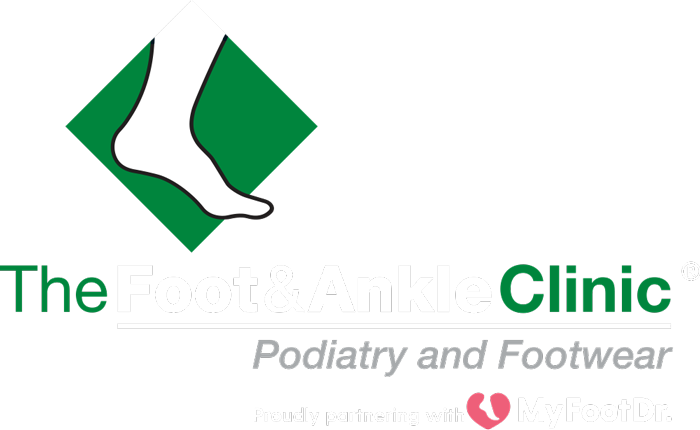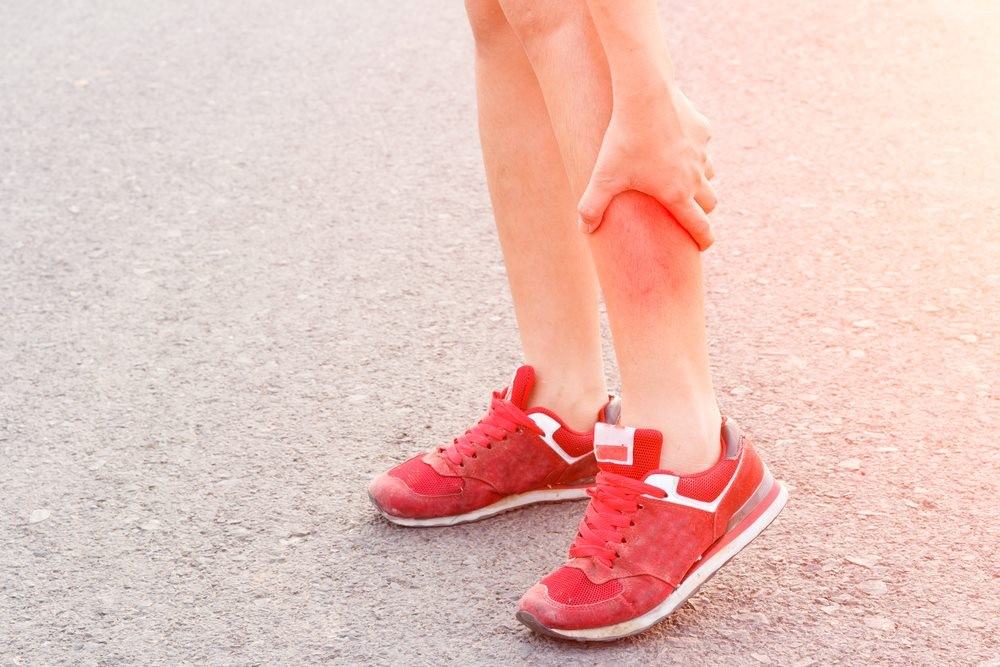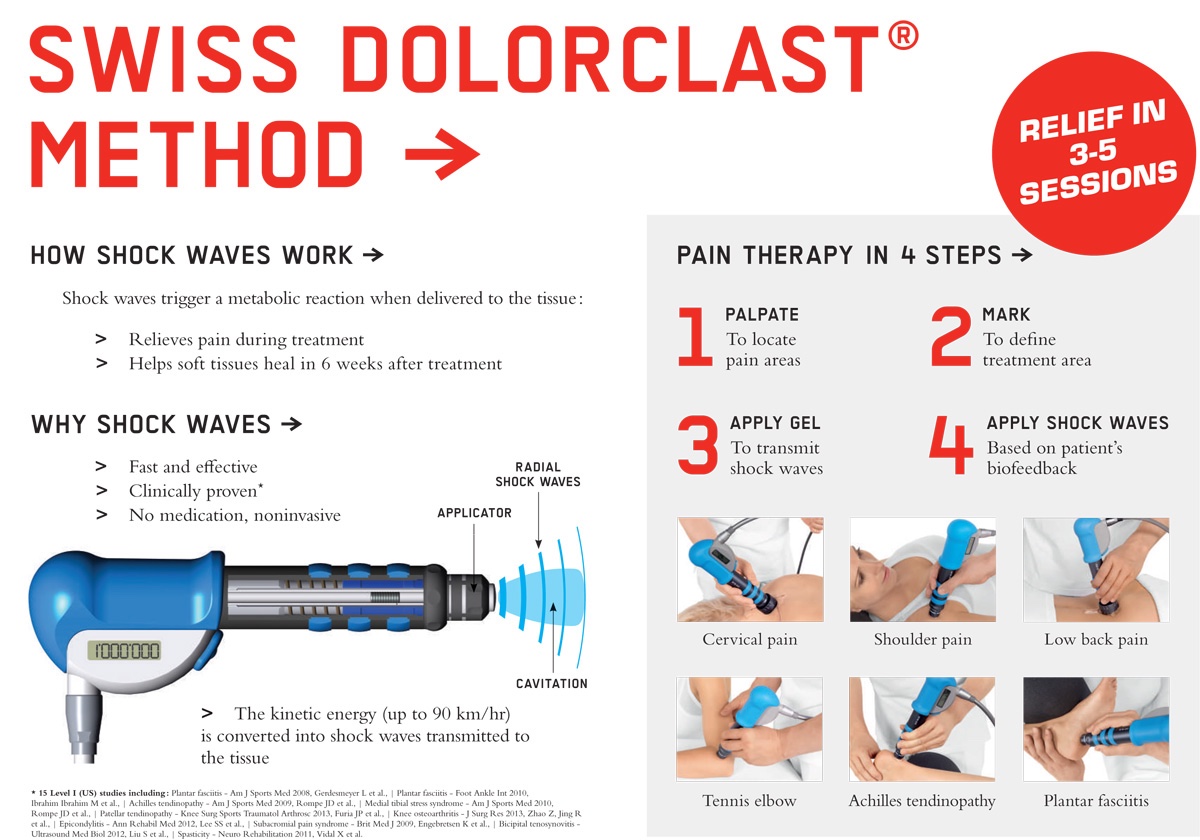Shockwave Therapy for Shin Splints
Medial tibial stress syndrome (MTSS) – commonly known as ”shin splints” – is a frequent overuse injury or repetitive-stress injury of the lower extremity. The condition is one of the most common causes of exertional leg pain in athletes, and usually presents as diffuse pain of the lower extremity, along the middle-distal tibia associated with exertion. Early courses of MTSS are characterized by pain that (i) gets worse at the beginning of exercise, (ii) gradually subsides during training, and (iii) stops within minutes after exercise. Later, pain may present with less activity and may even occur at rest.
Diagnosis is based on the clinical features of the disease. Diagnostic imaging should be considered to rule out other causes of exertional leg pain, or to establish the diagnosis of MTSS when in doubt. Training errors (“too much, too fast”) appear to be the most common factors involved in MTSS.
The condition is most often found in runners, soccer and basketball players, and in dancers. Notably MTSS is almost always associated with biomechanical abnormalities of the lower extremity including knee abnormalities, tibial torsion, femoral anteversion, foot arch abnormalities or a leg-length discrepancy. However, improper footwear (including worn-out shoes) can also contribute to shin splints.
A variety of tibial stress injuries can be involved in MTSS including tendinopathy, periostitis, and dysfunction of the tibialis posterior, tibialis anterior and soleus muscles. Women appear to be more affected than men, and have an approximately threefold risk for progression to stress fractures.
The treatment of MTTS should start with rest and ice in the acute phase, followed by low-impact and cross-training exercises during rehabilitation and a modified training program (decreased intensity, frequency, and duration, regular stretching and strengthening exercises, wearing proper-fitting shoes with good shock absorption).
Orthotics, manual therapy and taping, injections and dry needling may also help to alleviate the symptoms. Patients not responding to conservative treatment for six months should then be subjected to shockwave therapy (RSWT®). Surgery should also be considered for recalcitrant cases of MTSS.
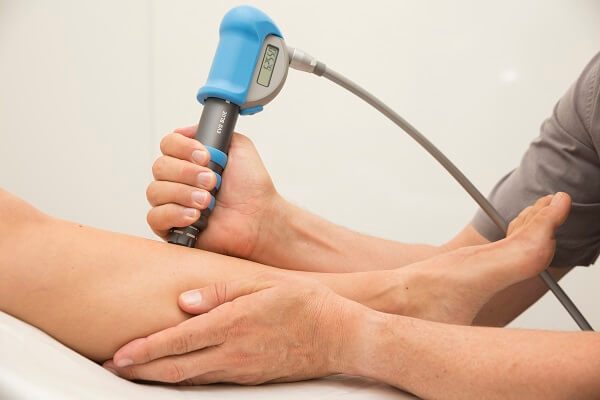
Shockwave therapy is a multidisciplinary device used in sports medicine, urology and veterinary medicine. Its main benefits are fast pain relief and mobility restoration. As well as being a non-surgical therapy with no need for painkillers it makes it an ideal therapy to speed up recovery and cure various conditions causing acute or chronic pain.
Shockwave therapy for shin splints (MTSS) is applied by following a set protocol. The Podiatrist will carry out a thorough case history taking which isolates the area that is painful and begins to understand the clinical history behind the condition. It is important to make sure that the condition being treated is actually MTSS and is therefore treatable with shockwave therapy.
During the examination tender points where the pain is maximal will be located, upon which a water-based gel medium is applied. This aids the transmission of the impulses into the desired area. The probe will then be placed over the desired area and then treatment for your shin splints will begin.
At first the Podiatrist will ensure the discomfort is kept to a minimum. After a while as the impulses increase little pain is felt. Although, more often than not there is some pain felt over the area of application. After treatment you should feel very little pain and this may last for a few days.
After subsequent treatments there will be a definite improvement in symptoms leading to reduction in the original pain felt.
How long will shockwave therapy take to work?
Generally most applications of shockwave for shin splints and most conditions will resolve within 3-4 sessions of 30 minutes (roughly). This can depend on the exact presentation of the condition. Making sure you see someone quickly to have the condition diagnosed can reduce the number of sessions needed.
Shockwave therapy is a safe and effective form of treatment in the management of shin splints. The results of which are considerably better than the conservative measures which we currently use to manage this condition.
SWISS DOLORCLAST METHOD:
In a class of its own! Since 1999, the Swiss DolorClast® has been setting new standards in orthopaedic shockwave therapy (ESWT) as the world market leader, with over 6000 devices in use worldwide. The system, specially designed for orthopaedic use, has changed pain therapy. It ensures a gentle and efficient treatment with pneumatically generated shockwaves, which are transmitted into the area of pain. A treatment with 2,000 impulses only takes about five to ten minutes.
(click to enlarge)
Dolorclast shockwave therapy gives instant pain relief and stimulates healing getting you healed, active and pain free so that you can enjoy all that life has to offer, faster.
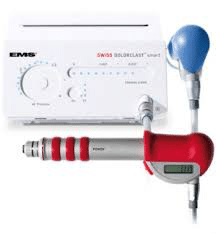
Swiss DolorClast® : Medial Tibial Stress Syndrome – (RSWT®) Radial Shock Wave Therapy
The Foot and Ankle Clinic is proud to have pioneered the use of Shockwave Therapy in Australia since its inception several years ago and therefore all our Podiatrists have vast experience using shockwave therapy and have done extensive training in shockwave therapy and its applications.
- Affordable
- In-Office Procedure
- Walk-In / Walk-Out
- No Time Off Work
- Clinically Proven
- No Drugs Or Side-Effects
At the Foot and Ankle Clinic our highly qualified team of Podiatrists are all members of the Australian Podiatry Association and offer a combined 50 years’ experience.
Put your feet in our hands! See us today in Chadstone, East Bentleigh, Moe, Sale, Traralgon, Warragul & Online Store and Retail Enquiries. NO REFERRAL NEEDED!.
